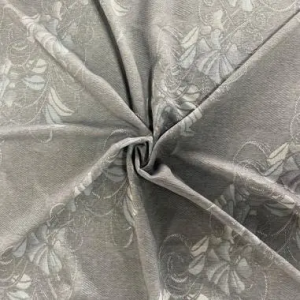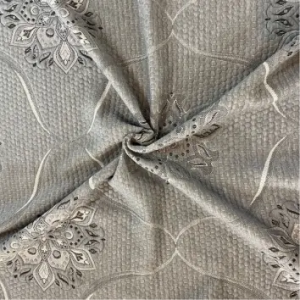A versatile and timeless textile, knitted fabrics have long been a cornerstone of the fashion world and their influence shows no signs of waning. From its humble origins to its modern applications, knitted fabrics have always been a symbol of comfort, style and innovation, attracting designers, manufacturers and consumers.
The history of knitted fabrics goes back centuries, with its origins rooted in the craft of hand-knitting. Over time, technological advancements led to the development of mechanized knitting processes, paving the way for the mass production of knitted textiles. This marked an important turning point, as knitted fabrics became more accessible and began to penetrate every aspect of daily life, from clothing and accessories to homewares and industrial applications.
One of the defining characteristics of knitted fabrics is their inherent stretch and flexibility, which sets them apart from woven textiles. This unique quality not only contributes to the comfort and freedom of movement of knitted garments, but also opens up a world of creative possibilities for designers. The ability to manipulate the structure and texture of knitted fabrics has inspired countless innovations in the fashion industry, resulting in a wide variety of knitwear styles, patterns and structures.
In addition to their beauty, knitted fabrics also offer functional benefits that make them durable. Its breathability, moisture-wicking properties and insulating capabilities make it ideal for a variety of climates and activities, from activewear and activewear to cozy sweaters and outerwear. In addition, the seamless structure of knitted fabrics allows for minimal fabric waste and efficient production, in line with the fashion industry’s sustainable and environmentally friendly practices.
The versatility of knitted fabrics extends beyond fashion and is used in a variety of technical and industrial applications. Its applications in medical textiles, automotive components and protective equipment highlight its adaptable and performance-driven attributes. The development of specialty knitted fabrics, such as knitted fabrics with antibacterial properties or conductive yarns for wearable technology, reflects the results of continuous innovation in the knitted textile industry.
Additionally, a resurgence of interest in traditional crafts and handcrafted techniques has brought knitted fabrics to the forefront of contemporary design movements. The renaissance of hand knitting and the appreciation of handmade knitwear has rekindled appreciation for the artistry and skill of knitted textiles, fostering a new sense of value and authenticity in the fashion world.
As the fashion industry continues to evolve, knitted fabrics remain timeless and relevant textiles that transcend trends and seasons. Its enduring appeal, coupled with its adaptability and innovative nature, has made knitted fabrics a cornerstone of creativity and expression in the fashion world and beyond.
Overall, knitted fabrics are testament to the enduring heritage of textiles, embodying a rich history of craftsmanship, innovation and creativity. Its ability to inspire and adapt to society's ever-changing needs highlights its timeless relevance and lasting influence in the worlds of fashion, design and industry. As the heritage of knitted fabric continues to evolve, it remains a source of inspiration and innovation for generations to come.
Post time: Mar-13-2024






